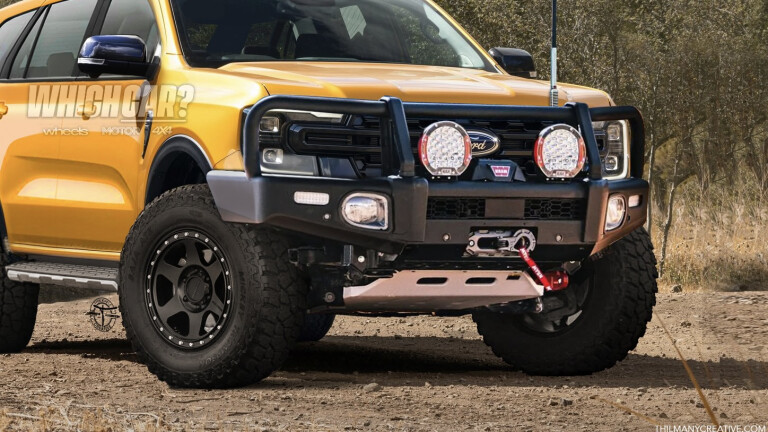
UPDATE, December 12: More renderings of the 2022 Ford Everest have emerged, allowing us to see what the four-wheel-drive might look like when it’s set up for the bush.
These digital creations by artist Sascha Thilmany imagine what the new Everest could look like when the camouflage is removed, when the vehicle eventually lands in Ford dealerships across the country.

However, one version has been modified with aftermarket wheels and tyres, a bull bar with Warn winch, bash plates, LED spotlights, awning, and UHF, as well as some gear for camping stashed on the roof basket.
Also included in this image gallery are renderings by SRK Designs and KDesign, all of which provide a slightly different take on the new Everest.
Let us know which one you prefer in the comments section below.

The story to here
November 30: The 2022 Ford Everest will venture into new ground when it’s released next year, with the four-wheel-drive set to benefit from a turbo-diesel V6 powertrain.
As the Everest will be based on the recently-unveiled Ranger ute, the model is expected to be fitted with the 3.0-litre turbo-diesel Power Stroke V6 engine, making the Ford the sole six-cylinder option and the most powerful four-wheel-drive in the ute-based category.
These renderings by illustrator Theottle provide an idea of what we can expect when the new-generation Everest is unveiled.

Despite the Power Stroke producing 185kW and 600Nm when it was fitted to the F-150 pick-up – compared to the 227kW and 700Nm from the turbo-diesel V6 found in the new LandCruiser – Ford’s new engine could end up causing headaches for Toyota across the board.
While the outgoing Ranger has been nipping on the heels of the Toyota HiLux – Australia’s best-selling passenger vehicle for the past five years – a V6-powered Everest could overtake the Toyota Kluger for annual sales, while also stealing buyers away from the ageing Prado and costly LandCruiser 300 Series.
Those wanting a capable four-wheel-drive with a powerful engine may gravitate towards the Everest, with the outgoing model priced from $50,090 – compared to the much larger LandCruiser, which is priced from $89,990, both before on-road costs.
The Everest and LandCruiser may be significantly different on paper, but new-car buyers could cross-shop the two models if the additional cabin space of the Toyota isn’t required, such as with grey nomads who often tow caravans.
Let us know what you think: Would you consider buying a V6-powered Ford Everest instead of a V6-powered Toyota LandCruiser?

COMMENTS